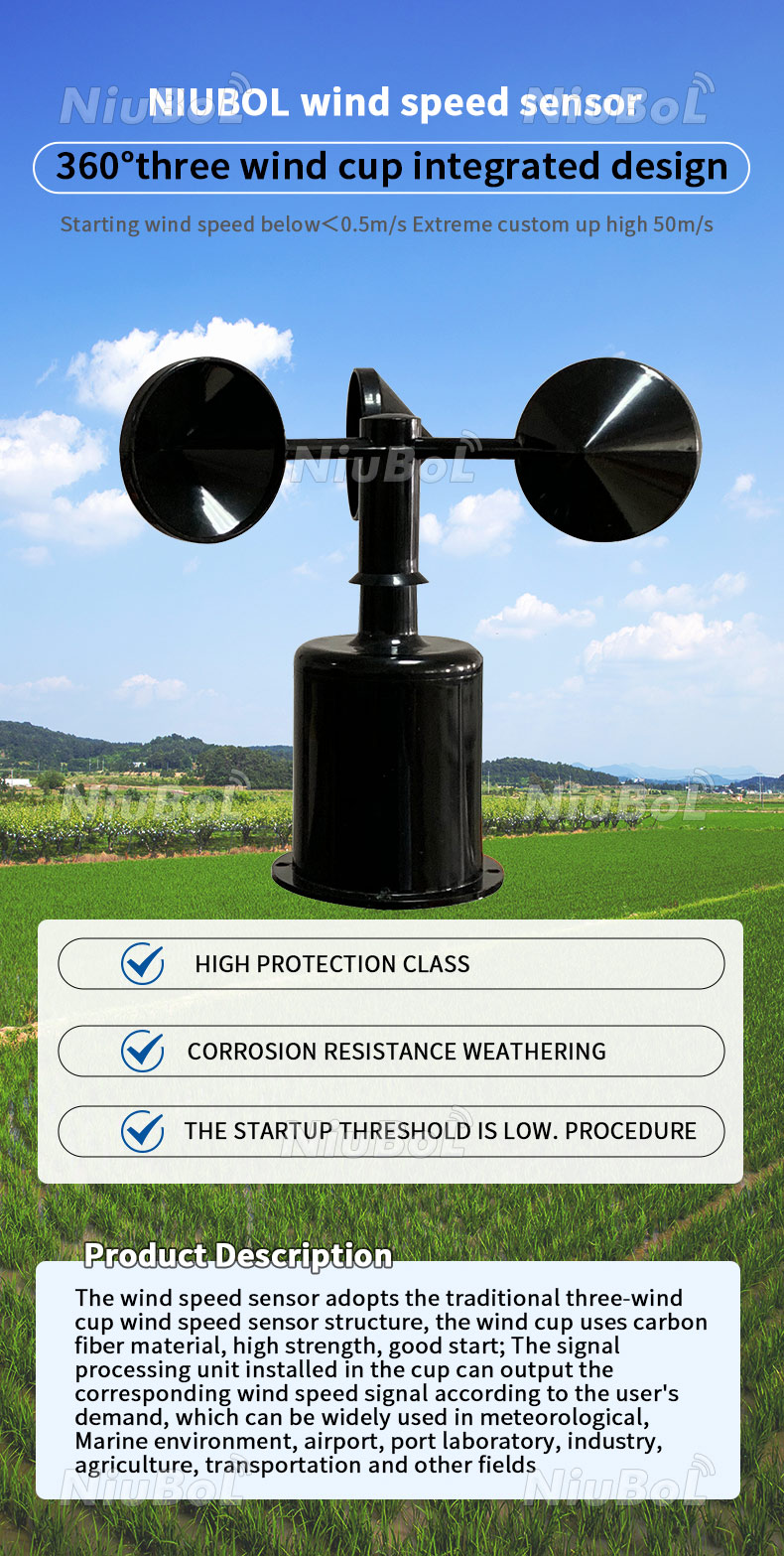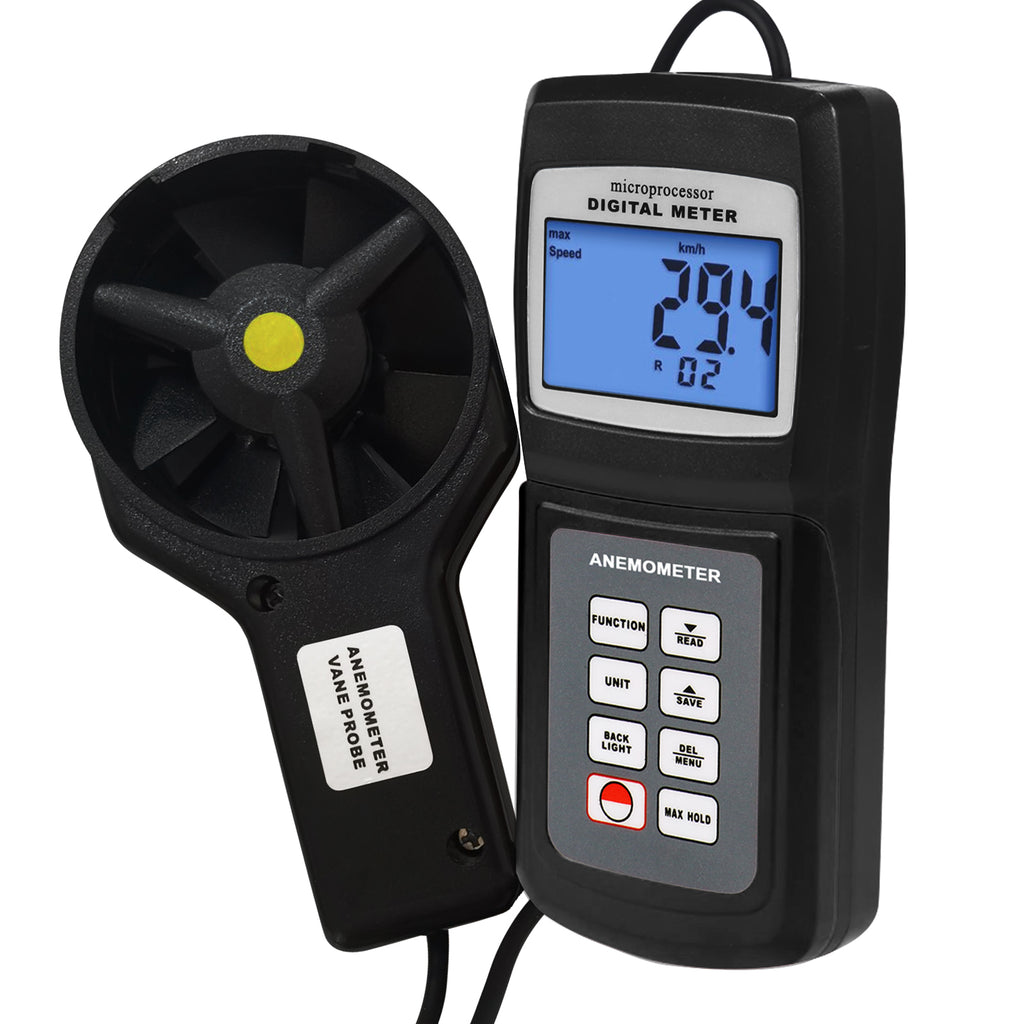How an Anemometer Can Enhance Your Weather Monitoring System
All You Required to Find Out About Anemometers: Just How They Work, Why They Issue, and Where to Make use of Them
Anemometers, though frequently forgotten in the world of scientific instruments, play a crucial function in various fields, supplying important insights right into wind speed and air flow patterns. As we dig right into the complexities of anemometer technology, we will certainly discover the internal workings of these tools, their relevance, and the crucial factors to consider when picking the ideal anemometer for details applications.

Anemometer Fundamentals
A vital tool used to determine wind speed and direction, the anemometer plays a vital duty in weather forecasting and numerous markets. An anemometer normally consists of 3 or four mugs that revolve in the wind, a vane that directs right into the wind, and sensing units to track the motions or rotations. By calculating the rotations or activities over a specific period, the anemometer can identify wind speed. The vane assists establish wind instructions by aiming right into the wind, supplying important information for weather forecasting, aeronautics, maritime operations, environmental tracking, and wind energy applications.
There are various kinds of anemometers offered, consisting of mug anemometers, vane anemometers, hot-wire anemometers, and sonic anemometers, each with its one-of-a-kind features and applications. Cup anemometers are generally made use of for basic wind rate dimensions, while vane anemometers are liked for directional dimensions. Hot-wire anemometers are appropriate for low airspeeds, and sonic anemometers are suitable for high-precision dimensions in research study and commercial settings. Recognizing the essentials of anemometers is crucial for precise wind data collection and evaluation across various fields.
Principles of Anemometer Operation
Structure on the fundamental understanding of anemometer essentials, the principles of anemometer operation clarify the technicians behind wind speed and instructions dimensions. Anemometers operate the concept of airflow impacting a sensing unit, creating it to rotate. Cup anemometers, for instance, have 3 or even more mugs that record the wind, creating them to rotate quicker as the wind rate boosts. The rotation rate is then exchanged a wind speed measurement. Vane anemometers, on the other hand, make use of a tail or a probe that aligns itself with the wind instructions, offering a measurement of wind instructions based upon the alignment of the sensing unit. Hot-wire anemometers depend on a heated cable that cools off as wind overlooks it, with the rate of cooling identifying the wind speed. Ultrasonic anemometers measure wind rate and direction by examining the time it takes for ultrasonic signals to travel in between transducers. Comprehending these concepts is vital for exact and trustworthy wind dimensions in various applications.
Importance of Anemometers
The value of anemometers in meteorology and numerous sectors can not be overstated. Anemometers play a crucial function in measuring wind rate and direction, supplying necessary data for climate projecting, environment researches, ecological surveillance, and air travel procedures. Meteorologists rely upon anemometers to collect precise wind information, aiding them recognize climate patterns, anticipate storms, and concern timely cautions to the public. In markets such as building, agriculture, renewable resource, and maritime procedures, anemometers are used to maximize processes, make certain safety and security, and boost performance. For instance, wind farm drivers use anemometers to examine wind problems and make best use of power manufacturing from wind turbines. In the maritime market, anemometers aid ship navigation by supplying real-time wind information to captains, helping them make educated decisions to make sure safe voyages. Generally, anemometers are important devices that contribute substantially to safety, performance, and informed decision-making in meteorology and a variety of industries.
Applications Across Various Industries
Applications of anemometers cover across diverse sectors, showcasing their convenience and utility beyond meteorology. In the eco-friendly energy industry, anemometers play a critical duty in assessing wind problems for wind ranch positionings, making sure optimal power manufacturing. Industries like construction and mining utilize anemometers to keep track of wind rates, essential for security procedures, particularly when operating at heights or in open-pit mines where strong winds can present risks. Anemometers why not try these out are also essential in the aeronautics industry, assisting pilots in recognizing airspeed and wind instructions for risk-free take-offs and landings. The maritime industry gain from anemometers for ship navigating, aiding sailors anticipate weather changes and readjust courses accordingly. In farming, anemometers help farmers in taking care of plant spraying by offering real-time data on wind speed to his comment is here prevent drift. Anemometers discover applications in HVAC systems to enhance air movement and boost energy effectiveness in structures. The diverse usage situations of anemometers emphasize their significance across various sectors, highlighting their essential role in improving functional safety and security and effectiveness (anemometer).

Picking the Right Anemometer for Your Needs
Choosing the suitable anemometer customized to your certain requirements is necessary for acquiring accurate wind speed and direction dimensions. When selecting an anemometer, think about variables such as the designated application, called for measurement variety, environmental conditions, and wanted features. For basic purposes, a cup anemometer is ideal for determining wind rate, while a vane anemometer gives wind direction data. Hot-wire anemometers are ideal for reduced airspeed dimensions, and ultrasonic anemometers use high accuracy and durability.

Verdict
In conclusion, anemometers play an essential duty in determining wind rate and direction across various industries. It is important to take into consideration the significance of anemometers in order to make informed decisions when picking the most suitable tool for gauging wind problems.
There are numerous types of anemometers available, consisting of cup anemometers, vane anemometers, hot-wire anemometers, and sonic anemometers, each with its distinct functions and applications. Mug anemometers are generally used for standard wind speed dimensions, while vane anemometers are preferred for directional measurements. Hot-wire anemometers are appropriate for reduced airspeeds, and sonic anemometers are optimal for high-precision site web measurements in research study and commercial settings.Structure on the foundational understanding of anemometer fundamentals, the principles of anemometer procedure elucidate the auto mechanics behind wind speed and direction dimensions. For general purposes, a cup anemometer is appropriate for measuring wind rate, while a vane anemometer supplies wind instructions data.